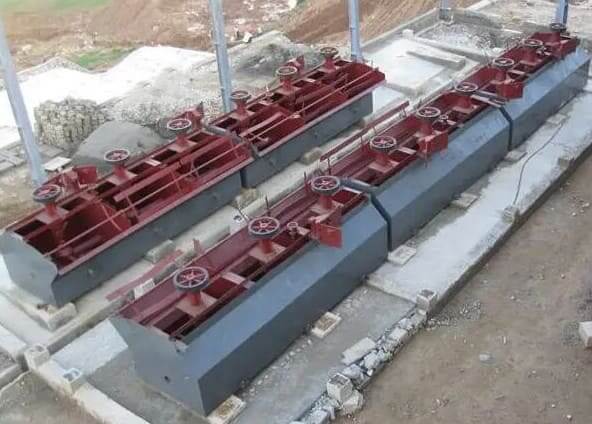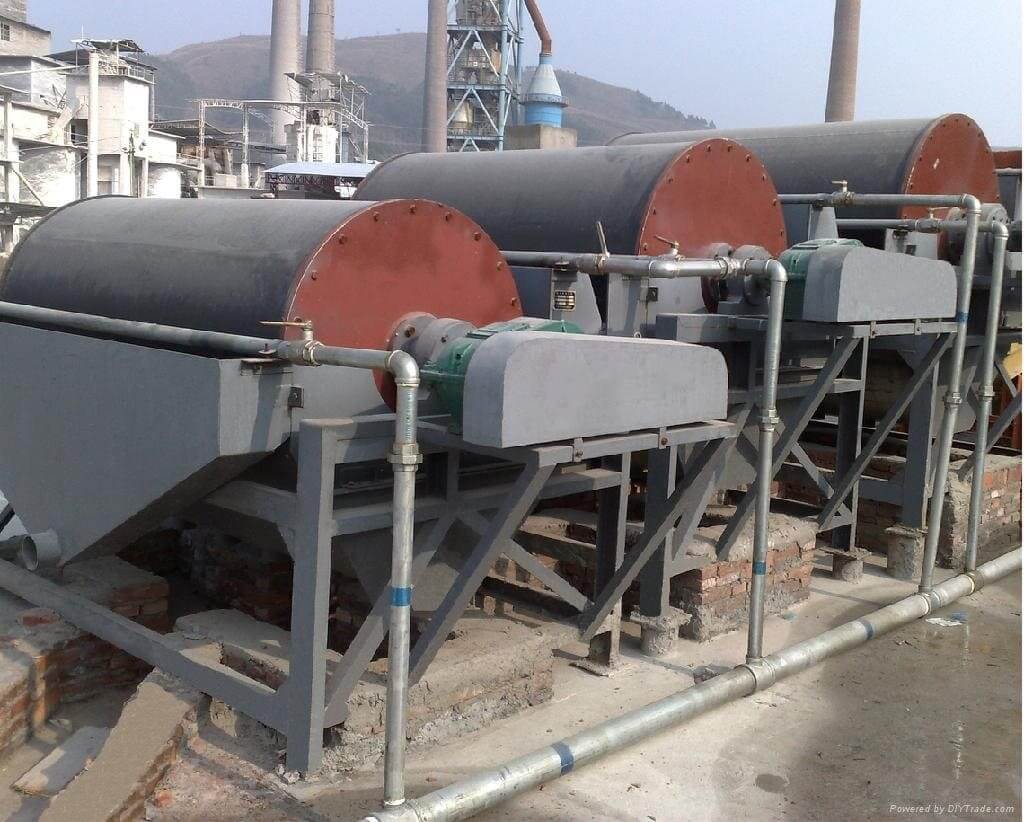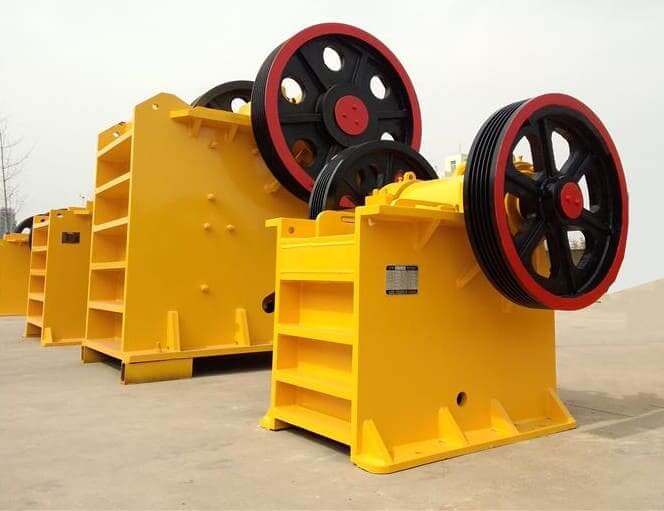It produced a large amount of copper slag during the copper ore beneficiation process. Most of the precious metals in the waste slag are symbiotic with copper. It can achieve comprehensive and effective utilization of resources through reasonable recycling.
Copper slag is primarily black or brown, with a metallic luster on the surface. It has a complex and brittle internal structure, is brittle and difficult to grind, has high ore density, and has high iron content. The domestic methods for treating copper slag are electric furnace dilution and mineral processing. The mineral processing method to recover copper from copper slag has increasingly become indispensable in pyrometallurgical copper smelting due to its high recovery rate, stable production, and low energy consumption.
Copper Slag Beneficiation Process Design
1. Ore Crushing and Grinding
In preparation for slag beneficiation, there are conventional processes and hemispherical grinding processes:
- Three-stage (two-stage) – closed-circuit crushing + two-stage (three-stage) ball milling process (conventional process);
- Coarse crushing + hemispherical grinding (complete white grinding) + ball milling process (semi-white grinding process).
2. Copper Slag Sorting
According to the characteristics of copper slag, the domestic mineral processing process for processing copper slag has the following characteristics: high concentration grinding, rapid flotation after grinding, high flotation concentration, stage grinding, and stage separation. Therefore, the current beneficiation method for copper slag mainly includes flotation, but sometimes magnetic separation and gravity separation are also used.
① Flotation Method
This method is widely used in the field of mineral processing. The flotation method has the characteristics of low energy consumption and a high copper recovery rate. Compared with returning slag to smelting, ferric oxide, and some impurities can be removed from the process, and the amount of quartz used in the smelting and blowing process will be greatly reduced. The copper flotation recovery rate is generally above 90%, the copper concentrate grade is greater than 20%, and the tailings contain 0.3% to 0.5% copper. Common ones include rapid flotation and flash flotation.
Fast flotation method
At present, most copper slag beneficiation adopts the process of step milling. The overflow after grinding is an advanced and rapid flotation operation to produce high-grade qualified copper concentrate directly.
Rapid flotation can recover high-grade copper minerals in advance, increase the overall recovery rate, reduce the tailings grade, and reduce grinding costs as much as possible. Since the particle size of the rapid flotation concentrate is relatively coarse, it is conducive to dehydration and filtration. The moisture content of the concentrate filter cake can be reduced by 1% to 2%, the total copper recovery rate can be increased by 1.5%, and the tailings grade can be reduced by 0.1%. The economic benefits are very considerable.
Flash flotation
Flash flotation is a flotation technology that recovers coarse-grained minerals from the circulating load of the grinding and classification circuit. The process has the following advantages:
- It greatly reduces the probability of the dissociated monomer coarse particles returning to the mill for regrinding, thereby reducing the over-crushing of valuable minerals and improving the recovery rate of beneficial minerals.
- Rapid flotation is ultra-high concentration flotation, which is more suitable for the flotation of high-density minerals than conventional low-concentration flotation and improves the flotation index of heavy metal minerals.
- Most classification equipment does not classify the sand into the settled sand according to geometric particle size. The valuable minerals in the settled sand are often of a much higher grade than the new ore, so the grade of the ore fed by flash flotation is relatively higher, and it can obtain higher minerals. Concentrate grade and operating recovery.
- Flash flotation technology can be used to obtain qualified concentrate products directly from the grinding and classification circuit, which reduces the loss probability of this part of the product in subsequent operations, so it is conducive to improving the overall recovery rate of the target minerals.
- Since the concentrate selected by the flash flotation process has a coarser particle size, the particle size composition of the total concentrate also becomes coarser. Generally speaking, coarse-grained materials are more accessible to dehydrate than fine-grained materials, which can reduce the fineness of the concentrate. The moisture content of the mineral filter cake is 1% to 2%.
② Magnetic Separation
It mainly uses magnetic separation to recover strong magnetic components in the slag. For example, when the slag contains iron (alloy) and magnetite, it can consider the magnetic separation. Since cobalt and nickel are relatively concentrated in ferromagnetic minerals and copper is in the non-magnetic phase, grinding finely crystallized slag can be used for pre-enrichment. Since the distribution of helpful metal minerals in the slag is complex, there is often continuous metasomatism, and weakly magnetic fayalite accounts for a large proportion of the slag; the magnetic separation effect is unsatisfactory. Magnetic separation is often used with other copper slag beneficiation methods.
③ Gravity Separation
The gravity separation method can be used in slag containing a certain amount of coarser particle size of single metallic copper. The monomer can be well dissociated during the grinding process, but this part of the metallic copper particles cannot be grinding. The flotation method is ineffective for this part of metallic copper. The specific gravity of coarse metallic copper particles and the gangue minerals in the slag are very different. According to the specific gravity difference characteristics, gravity separation can recover coarse metallic copper particles effectively.
Commonly Used Mineral Processing Equipment for Copper Slag
Crushing Equipment
At present, it mainly uses jaw crushers. The application of other crushing equipment with high efficiency and large crushing ratio, such as deep cavity jaw crushers, double-moving jaw crushers, inertial cone crushers, etc., is also receiving increasing attention.
Grinding Equipment
It mainly uses the ball mill for grinding, and there are two main types: long and short cylinders. Under the same ball milling power (or output), the short-cylinder ball mill has a more substantial impact than the longer-cylinder type. However, the production quickly fluctuates due to the short residence time of the material in the mill, and the operation is more complicated. In the long-cylinder ball mill, the material stays in the mill for a relatively long time, the change in material properties has little impact, the production is relatively stable, and it is suitable for fine grinding.
Flotation Equipment
The inflatable mechanical stirring flotation machine effectively improves the economic indicators of slag beneficiation.
Different copper slags may have different compositions and properties so that the actual beneficiation process may vary. Process design and optimization must be carried out in practical applications according to copper slag’s specific composition and characteristics.
LATEST PRODUCTS
Twin Screw Feeder
【Feeding Capacity】 10-160 t/h【Power】 2.2-…
Tubular Screw Conveyor
【Capacity】6-50 m3/h【Procesible Material】 …
Heavy Plate Feeder
Capacity: 100-240 m3/h Power: 15-45 kW Speed: 0…













